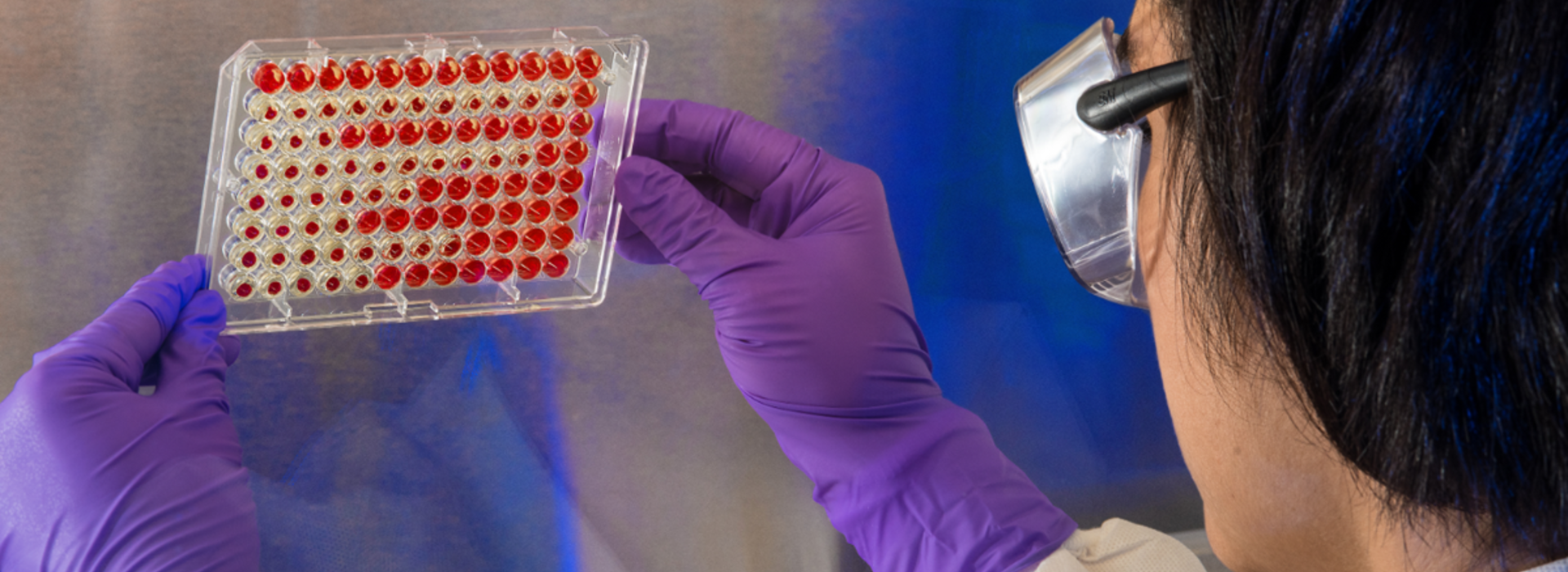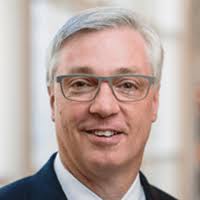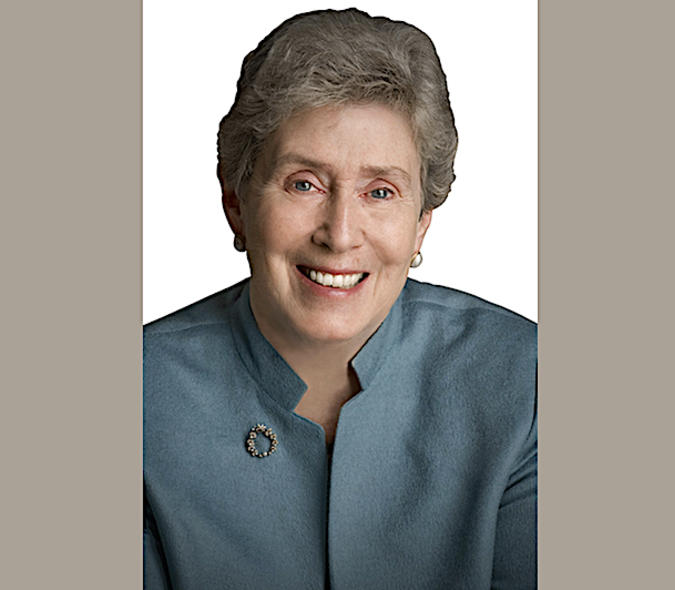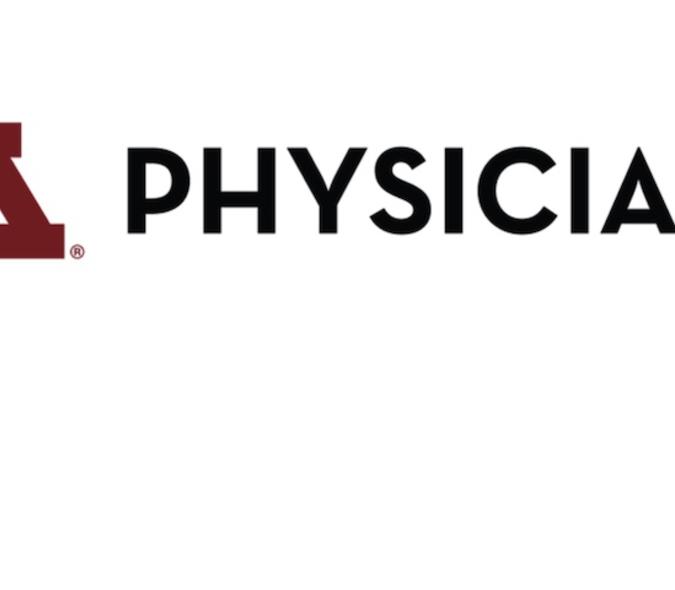
Hanson’s LMP training laid the foundation for his clinical laboratory leadership
What happens behind the scenes can make all the difference. More medical decisions affecting the lives and well-being of Americans than ever before depend on the results of laboratory tests. Clinical laboratories perform some 13 billion tests in the United States each year in more than 250,000 Clinical Laboratory Improvement Amendment (CLIA)-certified laboratories, according to the American Association for Clinical Chemistry (AACC). The clinical laboratory enterprise worldwide has been growing steadily, driven mainly by chronic disease in aging populations.
Today clinical laboratories are at the forefront of innovation in confronting the onslaught of the original SARS-CoV-2 coronavirus and its emerging and more dangerous variants. They have a long history of innovation since the first one opened at the University of Pennsylvania in 1895. In 1995 leading clinical chemists and pathologists gathered to celebrate the centennial of the William Pepper Laboratory of Clinical Medicine with a recommitment “to ensuring that research and teaching are considered as important as the service role of the clinical laboratory.” LMP head Leo Furcht was the keynote speaker.

It was just prior to that time that hematopathologist Curt Hanson, who completed his residency and fellowship training in LMP, joined the Mayo Clinic’s Department of Laboratory Medicine and Pathology. He subsequently served as department chair and was, until recently, chief medical officer (CMO) at Mayo Clinic Laboratories.
Hanson is a national leader in clinical laboratory testing with expertise in many areas including test ordering systems innovation, regulatory issues surrounding laboratory developed tests (LDTs), and the adoption of digital technology and machine learning in laboratory medicine. He was board chair of the American Clinical Laboratories Association 2018-2020 and is currently a board member of Clinical Lab 2.0, a Project Santa Fe Foundation initiative in partnership with LabVine™ set up to provide thought leadership in the field.
LMP training: “A wonderful experience”
An Iowa native, Hanson earned his MD at the University of Iowa’s Carver College of Medicine. He then enrolled at the University of Minnesota where he was LMP chief resident in 1987 following completion of a hematopathology fellowship in 1986. Hanson joined the Mayo pathology faculty after spending six years as a University of Michigan hematopathologist because he wanted to be closer to his family roots in southwest Iowa.
As for his time as LMP chief resident and hematopathology fellow, "It was a wonderful experience, absolutely the best," Hanson said in an interview. "I’m getting toward the end of my career and you think back to what has made things successful and there is no doubt that being able to come to the University of Minnesota for my residency and fellowship set me up for any kind of career success I may have had. I’m so grateful to Dr. [Ellis] Benson and the kind of department that he had put together with just some unbelievable faculty."
Hanson said he could run off a "huge list" of names of people who were so important to him. "Clearly Dr. Dick Brunning and Dr. Rob McKenna in hematopathology. I tried to be as much like them as I could during my training. They were not only the world's best hematopathologists and academicians but they were just great people and such wonderful role models." Hanson also spent a year doing research in the laboratory of the late LMP professor John Kersey, one of the founders of the Masonic Cancer Center. "I was so fortunate to have had some time to get to know John. A very kind yet very accomplished individual. He really helped me understand what research was and how to put together scientific questions. I owe a lot to a tremendous number of people but those three in particular molded me going forward."
As important to Hanson was his interaction with his fellow trainees. "There was an incredible mix of really talented residents and fellows there at the time. Being a part of that team was just as critical in our experience and our training. We worked hard but we also had a lot of fun. It was a great group of folks. I've been fortunate to be in contact with many of them over the years."
Value-based medicine: Innovation in test ordering systems
Healthcare is “changing tremendously,” Hanson said in an interview in 2019. “Without a doubt, cost concerns are everywhere, whether it be from the government, employers, private payors, and indeed patient-consumers. All are worried about the costs they all pay for healthcare, and thus the concerns for “’how are we going to control healthcare costs?’”
Though laboratory tests account for just 2-3 percent of total healthcare expenditures, innovation in clinical test ordering systems is central to the “value-based medicine” Hanson champions. He credits his experience as an LMP trainee with laying a good foundation for developing his ideas. “I have to say this actually goes all the way back to my training with Dr. Benson and also Drs. Mike Steffes and John Eckfeldt, some of my mentors who emphasized the role of the laboratory and how we need to be able to do the right thing” when it comes to ordering tests and making optimal use of laboratory resources.
Laboratories need to work harder at making sure they’re providing the right test for the right patient, at the right time, for the right reason, Hanson said. “There are a variety of contributors to poor stewardship of laboratory resources. Sometimes it’s providers and the busy world that they live in. It’s laboratories because our systems are not set up to guide clinicians on the way to ordering the best tests for their patients. It’s health systems that look to laboratories as a contributor to their profitability.” Patients also play a role, Hanson said. “‘Dr. Google’ is in the room as providers try to take care of their patients.”
Laboratory medicine’s ever-expanding knowledge bank could be better resourced, Hanson said. “A lot of it is, as laboratorians, we haven’t set up our systems to really take advantage of the knowledge that we have nor to help our clinicians to get to the right test. We set up transactional systems that really enable clinicians to order what they think they need rather than helping them with what they really need.” That is especially important as the number of tests continues to expand and their cost increases to sometimes thousands of dollars for specialized tests.
Hanson has led Mayo’s initiatives in test ordering systems innovation. While he was Mayo Clinical Laboratory’s CMO Hanson oversaw the development and implementation of National Decision Supply Company’s CareSelect™ Lab on its Epic electronic medical records (EMR) software system. CareSelect™ Lab is a clinical decision support tool designed to guide clinicians to ensure the appropriateness of test orders, manage their utilization, and assist with specialty testing. In the 2019 interview, Hanson described CareSelect™ Lab as “a great tool, really at the forefront of how to practice medicine.” The “mindboggling” amount of data it generates “is incredibly valuable and helpful.”
There’s growing awareness of the importance of laboratories including among the big EMR companies like Epic and Cerner, Hanson said. “They are aware of and have capabilities to help along this line,” he said. “There’s also some movement afoot, albeit at the ground level, to push the idea that laboratories really do have an impact on population and patient outcomes.”
Laboratory developed tests (LDTs) come under FDA scrutiny
Laboratory developed tests (LDTs) are a subset of in-vitro diagnostic tests (IVDs). The Food and Drug Administration (FDA) began regulating IVDs as medical devices when Congress amended the Food, Drug and Cosmetic Act in 1976. In recent years, the FDA has proposed guidance for regulating LDTs, which it defines as “a type of in vitro diagnostic test that is designed, manufactured and used within a single laboratory,” in colloquial terms a “home brew” test typically created in academic clinical laboratories and used in house to analyze samples taken from the human body. They may number 100,000 in the U.S., depending on how strictly they are defined. Last March, a bipartisan group of legislators introduced the Verifying Accurate, Leading-edge IVCT Development (VALID) Act of 2020 in both the U.S. House of Representatives and the U.S. Senate. The bill would create an FDA regulatory framework for both IVDs and LDTs as in-vitro clinical tests (IVCTs).
Hanson has been at the forefront of the LDT regulation debate, testifying before the FDA and giving talks at professional society meetings in his then-capacity as CMO of Mayo Medical Laboratories. "These rules have the potential to get in the way of effective patient care and really disrupt the whole patient-physician-laboratory relationship," Hanson told the StarTribune after his testimony to the FDA.
“Lab developed tests have been a critically important part of clinical laboratories especially from academic and university centers for decades,” Hanson said. “The FDA has historically left that to CLIA [to ensure quality laboratory testing] using what they call ‘enforcement discretion’ to kind of let it be. About 10 or 15 years ago they started to kind of rumble that they believed that they needed to step in and regulate these tests.”
It’s a two-way street, Hanson said. “You get too much FDA involvement and I have no doubt there will be unintended consequences and you will stifle innovation. Universities and other large systems will have a hard time justifying developing tests because of the cost, the time, the bureaucracy you’ve got to put together to do it. On the other hand, there are tests that probably shouldn’t be offered out there that CLIA hasn’t done a good job at [overseeing]. The key is finding that middle spot of not burdening our innovators with bureaucracy but yet being able to effectively deal with tests that truly are a problem and can lead to patient harm.”
The coronavirus pandemic public health emergency highlights the dilemma. Anticipating an outbreak in Seattle last February, the University of Washington’s Virology Lab created an LDT that successfully detected the SARS-CoV-2 coronavirus but was unable to obtain timely regulatory approval. The diagnostic test developed by the Centers for Disease Control and Prevention (CDC) performed poorly. The FDA subsequently opened the spigot for coronavirus LTDs under its Emergency Use Authorization (EUA) but has not kept close track of them or determined whether they are accurate, according to STAT News.
“Do I believe that we need to have more regulatory oversight of laboratory developed tests?” Hanson asked rhetorically. His answer is “yes.” He agrees current standards are insufficient and that clinical validation and risk stratification of LDTs are needed. “But if regulation is done to its extreme, it could really impede development. In the clinical environment, we’ve gone from the Obama administration where it was full steam ahead on regulatory control to doing a 180 with the Trump administration. And now, are we going to yin and yang back the other direction?”
Clinical data analytic platforms pave the way for the future of laboratory medicine
The Mayo Clinic began exploring use cases for artificial intelligence (AI) in 2017, according to a recent article in HealthTech: “An internal work group identified more than 200 activities using AI or machine learning (ML) technology for patient care, research and innovation. That kickstarted a process of building IT infrastructure to organize the healthcare system’s 150 years’ worth of data, and it culminated in signing a 10-year partnership agreement with Google Cloud in September 2019.”
Digitally enhanced diagnostics and advanced clinical testing analytics are teaming up with genomic and precision medicine, and that is where Hanson has his sights set. Ever since the Pepper Laboratory of Clinical Medicine was launched in 1895, clinical laboratories have been information-intensive enterprises, especially with the rise of the computer-based laboratory information system (LIS) in the 1980s. “There’s just no doubt that with the increased digitization of healthcare and the continued evolution of AI in decision-making, laboratory medicine and pathology departments are incredibly well positioned to be a part of this revolution,” Hanson said. “As pathology moves toward digital pathology and other types of analog activity that we do and our areas get digitized, again we are in a position that everything that we do will be a part of this world.”
The question is, how will laboratory medicine respond? “Will we as a profession and as experts in our area, will we stand back and let others who don’t know this space as well as we do become the drivers of that?” Hanson asked. “Or will we become leaders in understanding how we become part of that digital world and AI development. We should be there, but will we?”
Hanson thinks the answer is “yes.” Although radiology is out front in AI application to diagnostics, “pathology will be there, too,” he said. “Whether it be the clinical laboratory or pathology, we are a fundamental part of the diagnostic algorithms. We are key to the therapeutic and other kinds of patient-care decision processes that happen.”
Clinical laboratories: Medicine “behind the curtain”
When the coronavirus pandemic struck the U.S. a year ago, clinical laboratories were abruptly thrust into public view. Their ability to respond to a public health emergency was tested. After a slow start due mainly to regulatory hurdles, they responded, creating specific and sensitive in-house tests for the coronavirus that causes COVID-19, rapidly ramping up testing capacity, hiring laboratory technicians, and expanding laboratory space and equipment, all to meet the huge surge in testing demand.
But the pandemic is the exception to the rule that clinical laboratories generally operate behind the scenes in the healthcare enterprise. That has both practical and political consequences, as Hanson sees it. “I always say we are sort of like the Wizard of Oz. We’re the ‘wizard behind the curtain’ that nobody sees, and yet everything continues to run smoothly and beautifully.”
The central role of laboratories in delivering quality patient care needs to become more visible, Hanson insists. No doubt pathologist William Welch would concur. Welch was the first dean of the Johns Hopkins School of Medicine and is often called the “Dean of American Medicine.” In his remarks at the Pepper Laboratory dedication, Welch said: “We are assembled here today to assist at the opening of a laboratory which gives the fittest and strongest possible expression to the influence of scientific work upon practical medicine.”



